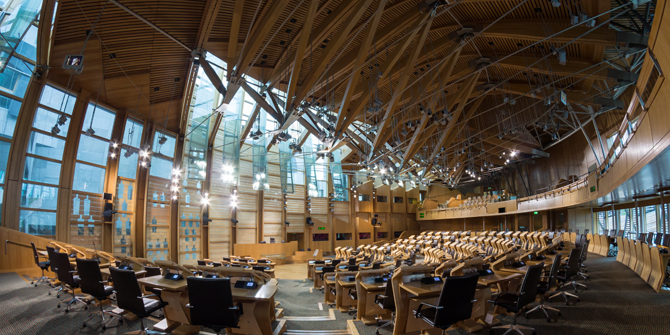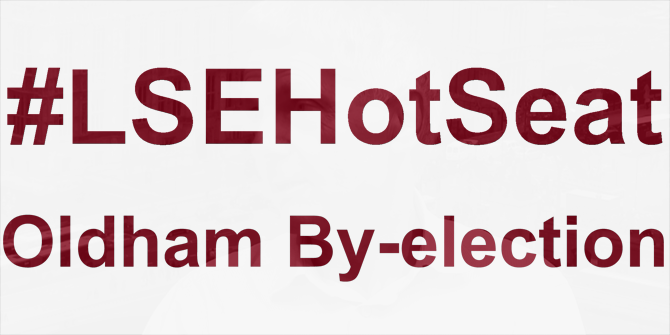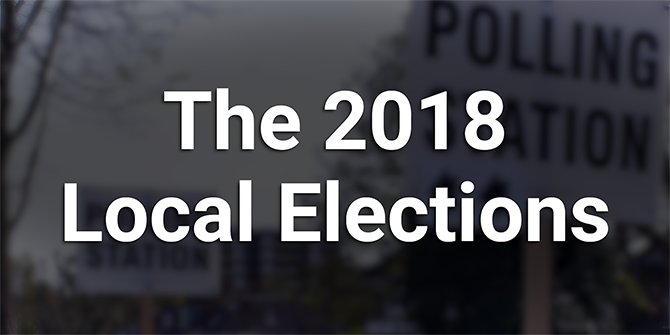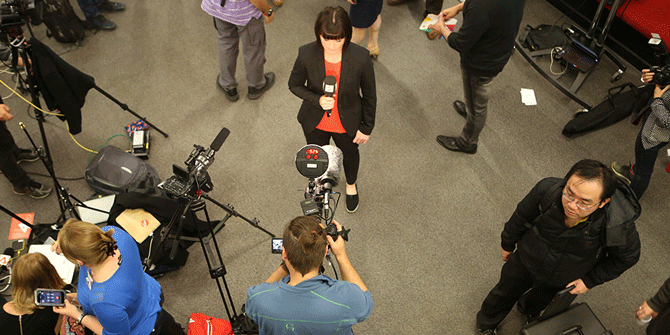
In the run up to May’s crucial Scottish Parliamentary Elections, Jim Gallagher previews the contest and what factors may motivate voters.
Polls forecast SNP victory
The 45 per cent support for independence lost an independence referendum in 2014, but provided the Scottish National Party with a firm basis for electoral contests ever since. If the pre-campaign polls are to be believed, and they told a consistent story, the SNP could be set for a comprehensive victory in the 2016 Scottish elections. It’s less clear what this means for Scottish constitutional and domestic politics.
A change in voters’ behaviour
Until 2015 Scottish voters seemed happy to treat Holyrood and Westminster elections as of a different order. In Holyrood, they have demonstrated an increasing tendency to look to the SNP. An SNP minority government in 2007 was followed in 2011 by a (remarkable) success to produce an overall majority, under an electoral system designed to produce coalition or minority government. That in its turn led to the 2014 referendum.
But for Westminster, Scots seemed content, for the most part, to put their faith in Labour. In 2010, for example, Labour had 41 out of the 59 Scottish seats. The referendum, however, changed all that. The SNP swept the board in the 2015 General election. They polled half of the vote, taking all but three of the Scottish seats – leaving one each for Labour, Liberal Democrats and the Conservatives.
The Additional Member System
Voting patterns could be set to be similar in the Scottish elections in May 2016. The SNP have been polling 50 per cent or more of the popular vote. That would give them most, if not all, of the first past the post Holyrood seats. But the devolved electoral system is partly proportional. Voters cast one vote for their constituency MSP and another for the party of their choice in a regional list. In addition to the 73 first past the post seats, there are 56 regional list members. Additional Members are allocated to parties to make the total number of MSP’s from each party in the region, including those elected by first past the post, more proportional to the party’s list vote share. Unless SNP support is even higher in the regional vote they are unlikely to get many list seats, though an overall majority is guaranteed if they win all or nearly all first past the post seats.
Much of the campaign then will be spent trying to attract second votes. Some voters wonder what the second vote means – is it their second preference, or a way of affirming the party as well as the individual they support? So the other parties have much to play for even in fighting for second votes and second place.
Constitutional Politics
Another SNP majority might suggest a successful nationalist movement pushing for another independence referendum. The reality, however, is different. Would the UK government agree, as it did in 2014, to confer the legal authority to hold one? If asked, quite possibly not – the 2014 referendum was, according to the Scottish government, “a once in a generation” event, and UK ministers might well hold them to that.
In any event the SNP won’t ask. The surge in support for the SNP is not matched by a surge in support for independence. Polling suggests a ‘Yes’ vote would still be below 50 per cent, and even the most enthusiastic nationalist leader would hesitate to risk a second defeat, and might feel very nervous about independence on the basis of a 51 per cent mandate from a deeply divided country. Nor do a majority of voters want a referendum: support for a rerun is at levels consistent with the SNP traditional core support of about one third of the electorate. So it is pretty likely that the SNP manifesto will not promise a second referendum, and Nicola Sturgeon tells her party they have to persuade Scotland of the “dream”.
The impact of Brexit
Brexit is a wild card in this pack. Polling suggests that Scotland is more pro-European than the UK as a whole (60+ per cent support for remain, though it may be declining), and certainly the Scottish political establishment (in all parties) has few Eurosceptics. UKIP did gain one Scottish seat in the (low turnout) European election and Scottish voters’ ‘Europhilia’ should not be exaggerated. It may be linked to lower experience of immigration.
It will also be tempting to suggest Scotland has its own nationalist movement, for whom the ‘other’ is England, not mainland Europe. But it’s only fair to say that the SNP has in recent decades been a pro-Europe party, ever since the idea of “independence in Europe” gained currency in the nationalist movement. Ms Sturgeon campaigns for “remain” for the whole UK.
However if Scotland votes to remain when the UK as a whole decides to leave, demands for a further independence referendum are likely to become insistent. First Minister Sturgeon says she does not seek this outcome, but implies she would be unable to resist popular pressure. What the terms of such a referendum would be is, however, hard to envisage, as the nature of the UK’s continuing relationship with the European Union, if any, would be a key consideration in the choice which Scots then faced in a second referendum.
Beyond Constitutional Politics
It is, however, possible that the 2016 contest will be the first Scottish election in which the constitutional issue will diminish in significance. Post-referendum, the Scottish Parliament is gaining substantial new tax and welfare powers. The Scotland Bill will devolve virtually all of income tax to Holyrood, assign half of the yield of VAT, and devolve about £2.5 billion of welfare benefits. In a last minute flurry of negotiation before the election, the Scottish and UK governments agreed a fiscal framework for the operation of this Bill, and it will now be on the statute book by summer 2016.
So instead of being a primarily concerned only with spending, the Scottish Parliament will now have to make tax choices: indeed with about half of its budget coming from “own resources”, and being responsible for the majority of public spending in Scotland, it will be one of the most powerful sub-state institutions anywhere in the world. The tax powers, together with the welfare options open to the Parliament, which will include topping up UK welfare benefits, will enable the devolved institution to pursue a different path on tax and spending from the rest of the UK.
The SNP (like Labour and Liberal Democrats) oppose the UK government’s public spending reductions. Holyrood will have the capacity to reverse them, if it is willing to increase taxes. Indeed the first tranche of new tax powers is already available, under the Scotland Act 2012, which allows for a Scottish rate of income tax.
UK set to have different income tax rates?
Labour proposed a 1p increase to offset UK Government spending cuts, but the SNP turned this down: so Scottish income tax levels in 2016 looked set to be the same as in elsewhere the UK. SNP ministers defended this by saying that the 2012 Act was too blunt an instrument, as it requires the tax rate in each band to be altered by the same amount.
The powers in the Scotland Bill will not have this constraint: Holyrood will be able alter the bands as well as the rates of taxation. So the 2016 party Manifestos will need to cover income tax proposals and the cuts for higher rate taxpayers just announced by Mr Osborne which could be reversed by Holyrood in 2017. This could mean that, for the first time, different parts of the UK could have different rates of income tax.
All this might, perhaps, signal a change from interminable constitutional debate: more discussion about what sort of country Scotland should be, than which country it should belong to. We shall see.
 For the latest analysis of 2016’s electoral contests, go to UK Elections 2016 on GovBlog.
For the latest analysis of 2016’s electoral contests, go to UK Elections 2016 on GovBlog.
 Professor Jim Gallagher was Director-General for Devolution in the Cabinet Office the No 10 Policy Unit and Ministry of Justice. He is now an academic with posts at the University of Glasgow and the University of Oxford.
Professor Jim Gallagher was Director-General for Devolution in the Cabinet Office the No 10 Policy Unit and Ministry of Justice. He is now an academic with posts at the University of Glasgow and the University of Oxford.
Follow Jim on Twitter – @ProfJimG





